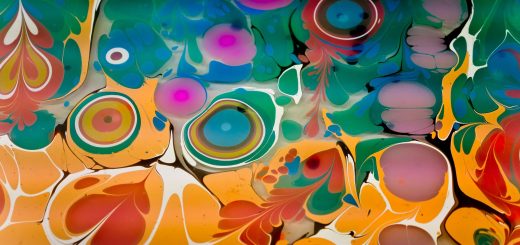What Are the Most Popular New Year’s Superstitions?

Before diving in, please note: This post is for informational purposes only. If you’d like to know more about how we approach topics, feel free to check out our friendly Disclaimer Page.
Hey there, amazing readers! 🖐️ Just a quick note: yes, we know there are a lot of ads here. Trust us, we get it—it’s not the prettiest look, but they help us keep this blog alive and kicking. Those pesky little ads cover the costs of all the behind-the-scenes magic, from hosting and tech stuff to creating content we hope you’ll love.
We’re committed to delivering quality posts, and your support (even just sticking around despite the ads) means everything to us. So, bear with us, and thanks for helping us keep the good vibes rolling. Now, on to the fun stuff! 😉
TRANSLATE BUTTON AT THE END OF THE ARTICLE
A Quick Overview
As the clock strikes midnight on December 31st, people around the globe celebrate the arrival of a new year.
This time of year is steeped in tradition and superstition.
Each culture boasts its unique customs aimed at ushering in good fortune, health, and happiness.
In this article, we will explore some of the most popular New Year’s superstitions that capture the spirit of hope and renewal.
From Southern traditions to Spanish customs, each practice tells a story of its own.
Let’s dive into the fascinating world of New Year’s superstitions.
Introduction to New Year’s Superstitions and Traditions
New Year’s superstitions often reflect the hopes and fears of cultures as they transition into a new year.
The act of celebrating the end of the year is a universal phenomenon, but the beliefs surrounding it vary widely.
They often come from ancient traditions or are rooted in folklore.
Many people feel that these superstitions can influence their luck in the coming year.
For example, some might argue that the way you spend New Year’s Eve sets the tone for the entire year.
Therefore, engaging in positive activities and avoiding negativity is believed to attract good fortune.
Even the food we eat on New Year’s Eve can be symbolic.
It’s fascinating how food connects to our beliefs.
Cultural heritage plays a significant role in shaping these practices.
They often bind communities together, fostering a sense of belonging.
In many cases, these customs are passed down through generations, making them a cherished part of family history.
To some, these traditions may seem whimsical.
Others take them quite seriously.
Regardless of personal beliefs, one thing is clear: they create a sense of excitement and anticipation as we welcome the new year.
The Significance of the New Year Celebration Worldwide
The New Year’s celebration is a global event marked by joy, fireworks, and festivities.
Different countries have their unique approaches, often influenced by local customs and history.
In the United States, for instance, people gather in Times Square to watch the famed ball drop.
In Japan, the New Year is celebrated with family gatherings and traditional meals, emphasizing renewal and purification.
Here are some noteworthy customs from around the world:
China: The Lunar New Year often involves family gatherings and elaborate feasts.
The color red is prevalent, symbolizing good luck.
India: Diwali, sometimes called the Festival of Lights, shares similar themes of renewal and celebration, though it doesn’t align with January 1st.
Russia: The New Year is often celebrated twice, once on January 1st and again on January 14th, according to the Julian calendar.
These customs remind us that while the specifics may differ, the underlying wish for a prosperous new year is universal.
It’s a time to reflect on the past and hope for a brighter future.
Black Eyed Peas: A Southern Tradition for Good Luck
In the Southern United States, eating black-eyed peas on New Year’s Day is a well-loved tradition.
It’s believed that these humble legumes bring prosperity and good luck for the coming year.
Many families prepare a dish called "Hoppin’ John," which typically consists of black-eyed peas, rice, and pork.
It’s not only delicious but also rich in symbolism.
The origin of this custom dates back to the Civil War, when Union troops destroyed crops in the South.
The black-eyed pea was one of the few foods left unscathed, leading to its reputation as a food of resilience and prosperity.
Here’s a fun way to incorporate this tradition: Host a New Year’s Day brunch featuring Hoppin’ John and share stories with your loved ones about what you hope for in the coming year.
Eating Grapes at Midnight: A Sweet Spanish Custom
In Spain, the New Year is celebrated with a peculiar yet delightful tradition: eating twelve grapes at midnight.
Each grape represents a month of the year.
If you manage to eat all twelve grapes before the clock finishes chiming, you’ll have good luck for each month.
The custom originated in the early 20th century and has since become a beloved tradition.
Many Spaniards gather with friends or family, ready to munch away.
The challenge of eating the grapes quickly often leads to laughter and excitement, making it a joyous occasion.
So, if you’re curious about trying this tradition, consider inviting friends over for a small gathering.
Set the mood with festive music, and let the grape-eating commence as the clock approaches midnight.
Jumping into the New Year: Leap for Good Fortune!
A quirky superstition celebrated in various cultures involves jumping into the New Year, quite literally.
For instance, in some Latin American countries, people jump off a chair at midnight to symbolize leaving behind the old year and welcoming the new one.
The act of leaping conveys a sense of hope and optimism.
It signifies a fresh start and the pursuit of new adventures.
Some people take this tradition a step further by incorporating their own unique twists—like a leap into the ocean or off a small step.
Next New Year’s Eve, gather your friends and plan a group jump at midnight.
It’s a fun way to embrace the excitement of a new beginning while making unforgettable memories.
Wearing White: A Brazilian Ritual for Renewal
In Brazil, many people wear white on New Year’s Eve, believing it brings peace and prosperity.
This custom is especially prevalent along the beaches of Rio de Janeiro, where crowds gather for celebrations.
Wearing white symbolizes purity and renewal.
The practice is deeply connected to the Afro-Brazilian religion of Candomblé, where white is considered sacred.
In addition to wearing white, Brazilians often offer flowers and gifts to the sea goddess Yemanjá, hoping to receive her blessings for the new year.
If you’re looking to add a touch of Brazilian tradition to your New Year’s Eve festivities, consider donning a white outfit and perhaps making a small offering to the ocean, or even setting up a space in your home to honor the theme of renewal.
First Footing: The Scottish Tradition for Prosperity
In Scotland, the first person to enter a home after midnight is known as the "first footer." This person ideally brings good luck for the year ahead.
Traditionally, it’s considered best if the first footer is a man with dark hair, as this is believed to symbolize stability and prosperity.
First footers often bring gifts such as coal, whiskey, or bread, signifying warmth, abundance, and hospitality.
This deep-rooted tradition highlights the importance of community and connection during the New Year.
To celebrate this custom, invite friends over and assign someone to be the "first footer." They can bring a gift that reflects good luck.
It’s a delightful way to unite friends and family while incorporating an old-world charm into your celebration.
Cleaning House: Sweeping Away Bad Luck for the Year
Cleaning the house before the New Year is a custom found in various cultures.
The act symbolizes sweeping away the misfortunes and negativity of the past to make way for new beginnings.
Many people engage in a thorough clean-up, removing clutter and dust to welcome positive energy.
Some believe that cleaning on New Year’s Eve should be avoided, as it may inadvertently sweep away the good luck that the new year brings.
Consider dedicating a day before December 31st to declutter your space.
As you tidy up, reflect on what you want to leave behind in the past year.
It’s a cathartic ritual that not only refreshes your surroundings but also rejuvenates your spirit.
New Year’s Resolutions: A Modern Superstitious Practice
Making New Year’s resolutions has become a modern superstition in its own right.
Many people take this time to set goals, whether they are related to health, finances, or personal development.
The act of committing to a resolution symbolizes a fresh start and the desire to improve oneself.
This practice can be traced back to ancient Babylonian times when people made promises to their gods to return borrowed items.
When crafting resolutions, try to focus on specific, attainable goals.
Instead of saying, "I want to get fit," consider saying, "I will go to the gym three times a week."
Sharing your resolutions with friends can also create a support system, making it more likely for you to stick to them throughout the year.
Fireworks and Noise: Scaring Away Evil Spirits
Fireworks and loud noises are common sights and sounds during New Year’s celebrations.
Many cultures believe that the ruckus scares away evil spirits, ensuring a fresh start.
In places like China, the use of fireworks is tied to the Lunar New Year, while in Western countries, it’s a standard part of welcoming January 1st.
Along with fireworks, other loud celebrations—like banging pots and pans—serve the same purpose.
The explosion of noise and light signifies joy, festivity, and the hope for a prosperous year.
Next New Year’s Eve, consider incorporating noise into your celebrations.
Whether it’s fireworks or simply clanging pots, it’s a fun way to engage with this age-old superstition.
The Meaning of Coins: A Symbol of Wealth and Abundance
In many cultures, coins symbolize wealth and prosperity.
Tossing coins into water bodies or hiding them during celebrations is common.
In Greece, people bake a special cake called "Vasilopita," hiding a coin inside.
The person who finds the coin is said to receive good luck.
This practice not only emphasizes the desire for financial abundance but also fosters a sense of togetherness.
Sharing the cake with family and friends during New Year’s celebrations enhances the joy of the occasion.
Consider adding a coin-tossing game to your festivities.
It’s a simple yet engaging way to embrace the spirit of abundance for the upcoming year.
Conclusion: Embracing Superstitions for a Joyful Year
As we step into the New Year, embracing various superstitions can add a layer of joy and excitement to our celebrations.
From eating black-eyed peas for luck to making resolutions for a better future, these customs connect us to our cultural roots and foster a sense of community.
While some may view these practices as mere quirks, they often carry meaningful symbolism that encourages optimism and hope.
So, let’s gather with friends and family, partake in these time-honored traditions, and welcome the new year with open arms.
After all, who wouldn’t want a sprinkle of good luck and a dash of fortune in their lives?
Cheers to a joyful and prosperous new year ahead!

The Enlightenment Journey is a remarkable collection of writings authored by a distinguished group of experts in the fields of spirituality, new age, and esoteric knowledge.
This anthology features a diverse assembly of well-experienced authors who bring their profound insights and credible perspectives to the forefront.
Each contributor possesses a wealth of knowledge and wisdom, making them authorities in their respective domains.
Together, they offer readers a transformative journey into the realms of spiritual growth, self-discovery, and esoteric enlightenment.
The Enlightenment Journey is a testament to the collective expertise of these luminaries, providing readers with a rich tapestry of ideas and information to illuminate their spiritual path.
Our Diverse Expertise 🌟
While our primary focus is on spirituality and esotericism, we are equally passionate about exploring a wide range of other topics and niches 🌍📚. Our experienced team is dedicated to delivering high-quality, informative content across various subjects ✨.
To ensure we provide the most accurate and valuable insights, we collaborate with trusted experts in their respective domains 🧑🏫👩🏫. This allows us to offer well-rounded perspectives and knowledge to our readers.
Our blog originally focused on spirituality and metaphysics, but we’ve since expanded to cover a wide range of niches. Don’t worry—we continue to publish a lot of articles on spirituality! Frequently visit our blog to explore our diverse content and stay tuned for more insightful reads.





